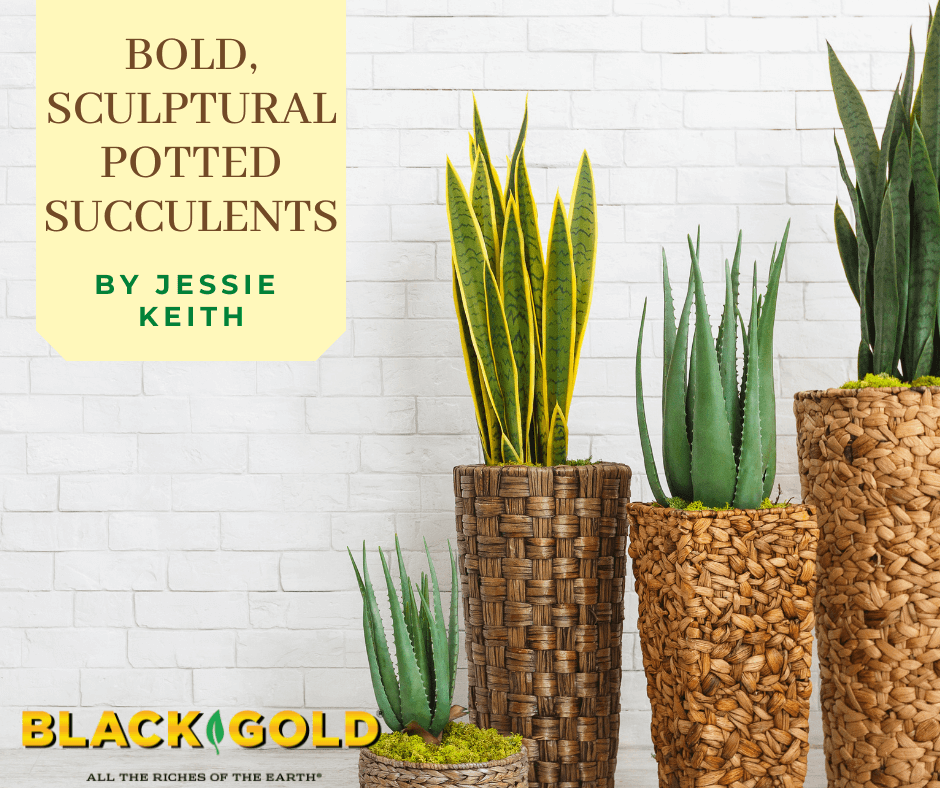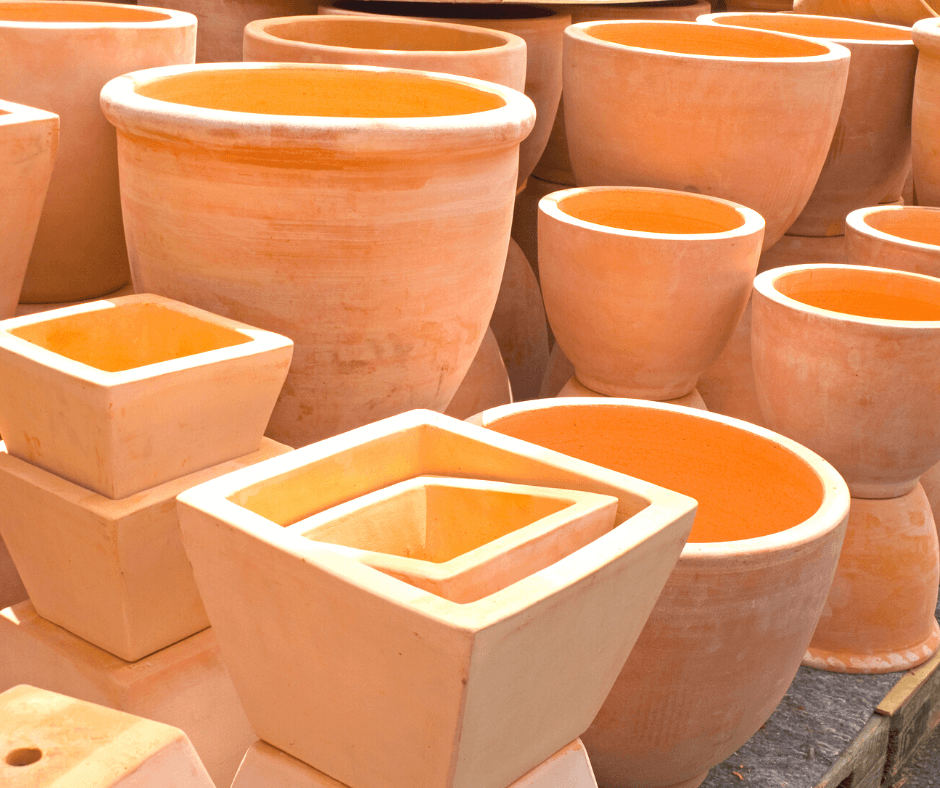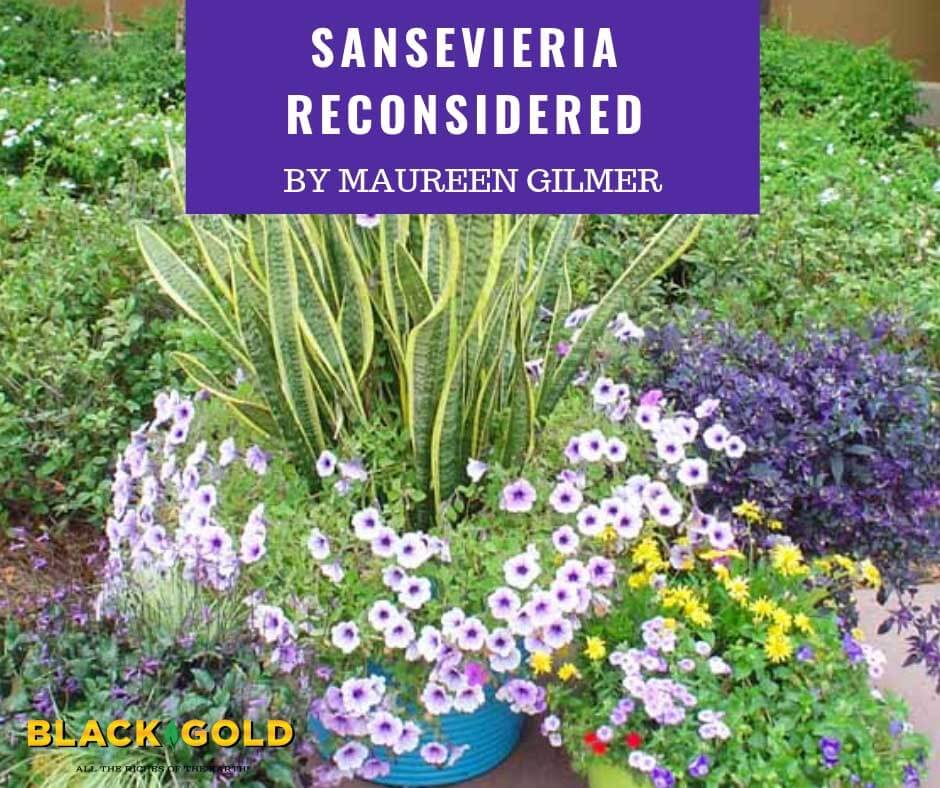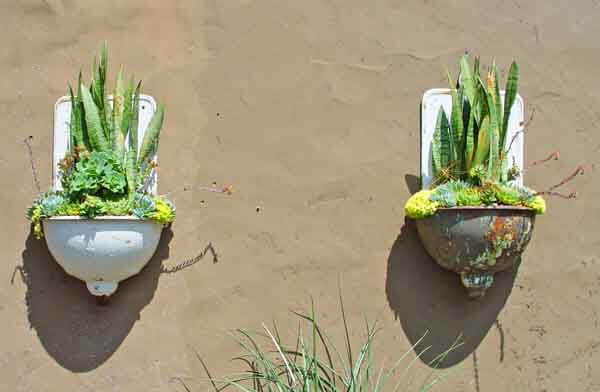
Some succulents have a real presence and panache. The best can fill a large pot, creating unmatched indoor or outdoor living sculptures. Most are long-lived and effortless to grow if provided a few cultural basics. These are the succulents to choose for bold, effortless gardening.
Before choosing your sculptural succulent, be sure to pick out an equally large, attractive pot that will hold it for several years. The container should be well-made, have drainage holes, and a reliable saucer at the bottom to catch water. Those that are glazed or sealed will hold water better. I tend to favor tall, upright pots in bold, monochrome colors or pleasing textures. low, broad pots can also be very attractive if you can find a sturdy plant stand to hold them. For succulents, I recommend planting in Black Gold® Natural & Organic Succulent and Cactus Potting Mix. It has excellent porosity and drainage as well as ample mineral components. If you prefer a little more organic matter, supplement with a bit of Black Gold® Peat Moss Plus, which is easily wetted and holds water well. The addition of a little peat is most useful with Sansevierias and Aloes.

The Best Bold, Sculptural Succulents
My preference is to purchase large plants from the start for instant gratification. They may cost a bit more, but they are worth it because many succulents are slow-growing. Here are some of my favorites for bold pots. Please make a note of those that have sharp tips or edges, because they are not safe for homes with small children or curious pets.
Agave

There are literally thousands of Agaves from which to choose, and I love them all for their substantial rosettes of bold foliage. Some remain only a foot tall while others can reach 12 feet or more! Some have slender, needle-like leaves, such as the silvery Porcupine Century Plant (Agave striata ‘Live Wires’, Zones 7-10, 18 inches tall), while others have big, beefy, contorted leaves, like Twisted Tongue Hybrid Century Plant (Agave x amourifolia ‘Twisted Tongue’, Zones 7-10, 36 inches tall)–both of these are quite sharp. The sharp, tri-colored Joe Hoak Variegated Century Plant (Agave desmettiana ‘Joe Hoak’, tropical, 36 inches tall) is considered one of the finest variegated agaves. For an equally colorful, but softer agave, try Ray of Light (Agave attenuata ‘Ray of Light’, tropical, 36 inches tall), which produces big, voluptuous rosettes of bright green with fine ivory edges.
Aloe

There are hundreds of aloes, and several are truly unique and wonderful. One that I recently ordered and await is the fantastic Swordfish Aloe (Aloe ‘Swordfish) with its wild, succulent, blue-green leaves edged in bright orange teeth. I plan to put it in a bright azure-blue pot for contrast. The tree-like aloe, fan aloe (Aloe plicatilis, tropical) can reach up to 8-feet when planted in the ground but stays much smaller in a pot. It looks much like a jade plant, but it has unusual fans of silvery blue leaves. Mature specimens will produce spikes of coral-red flowers in spring. The upright elegant aloe (Aloe elegans, image above) looks particularly lovely in upright containers that show off their form.
Mangave

Mangave are hybrids between the two succulents, Agave and Manfreda, and they make beautiful specimens for the home. Some are even hardy and suited to outdoor growing, particularly in more arid climates. Each year, more and more of these bold succulents are being offered. One of my favorites is the striking ‘Bad Hair Day‘ (Zones 7-11), which forms a rosette of cascading, purple-speckled leaves that fall down like a head of hair. The large ‘Blue Mammoth’ (Zones 7-11) is a larger form that reaches 2-feet high and a little wider when mature. Its undulating blue-green leaves look beautiful in either bright or equally muted pots. If you prefer variegated foliage, then Navajo Princess Mangave, which has bold, ivory-edged leaves that reach 20 inches, is an excellent choice. Plant
Sansevieria

Snake plants or mother-in-law’s tongues (Sansevieria species and hybrids) are African natives with a well-earned reputation for being some of the toughest plants around. Not only do they grow well indirect light, but they withstand minimal water–two to three times monthly. They are also striking and attractive, especially those with long, variegated leaves. The long-leaved ‘Laurentii‘ is a classic variety with striated light and dark green leaves edged in yellow. The clumps slowly widen to form a sturdy, vertical specimen. ‘Moonshine’ has extra broad, pale silvery-green leaves that brighten up a room in the wintertime. The bright and beautiful ‘Gold Flame‘ has leaves with large vertical streaks of dark green and gold. These are just a few of the many snake plants available. You can’t go wrong with any of them.
Zanzibar Gem or ZZ Plant
ZZ plant (Zamioculcas zamiifolia) is another nearly indestructible house plant that adds color, texture, and interest to indoor spaces. It is commonly found in most house plant sections ar garden centers, so you should have no trouble finding it either. They can be quite slow-growing, so it is wise to start with a sizable specimen. Treat them as you would snake plant, and you will be gifted with lots of arching stems laden with glossy dark green leaves. The only thing that will kill a ZZ plant, aside from severe pests, is overwatering. So, refrain from giving it too much liquid care.
The durability and low-care status of these plants make them just as appealing to home gardeners. You might experience some problems with pests or diseases. If spotted, treat them right away. (Click here to learn how to manage the worst house plant pests.) From there, keep them watered, feed occasionally, and upgrade their pots if they outgrow them. Watch the video below to learn how!








